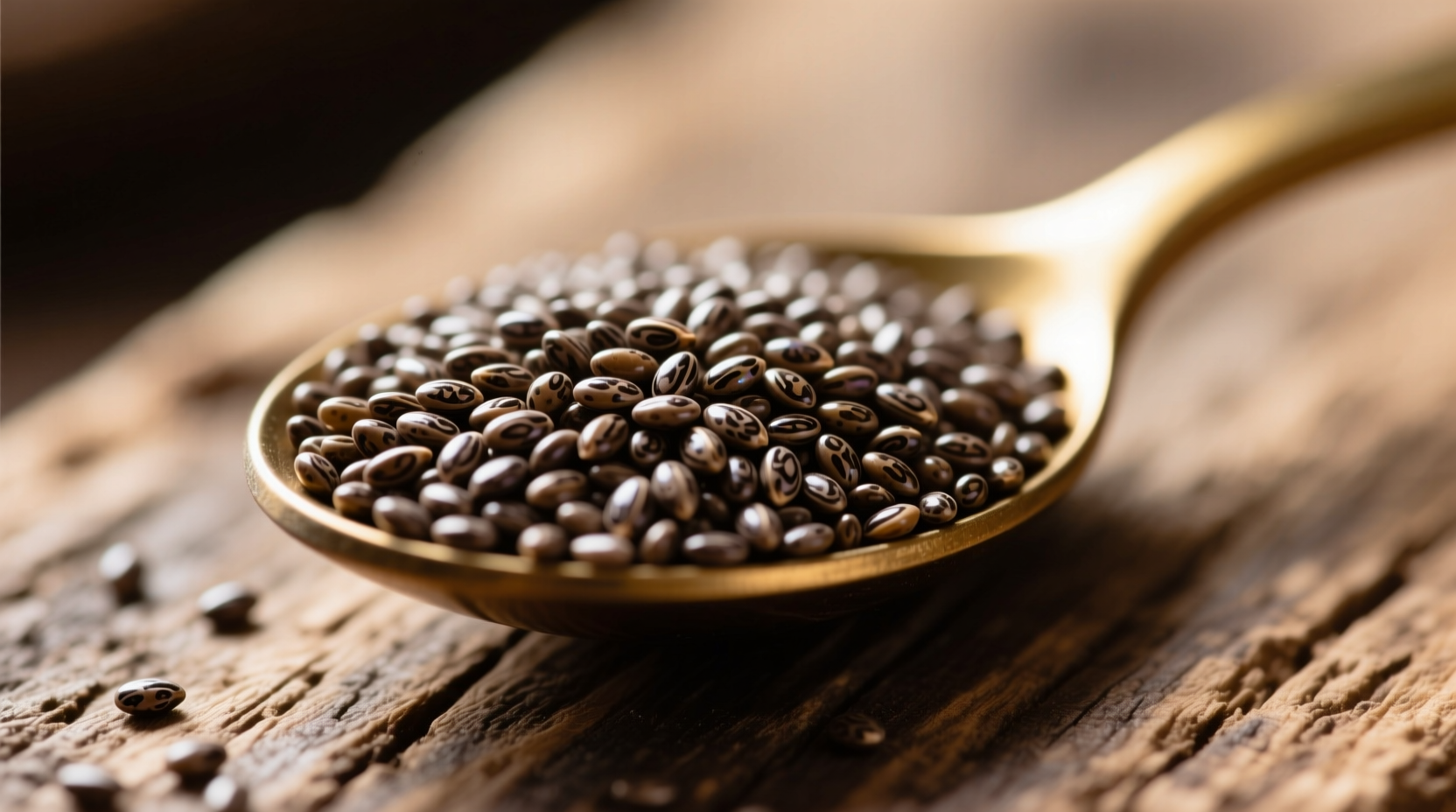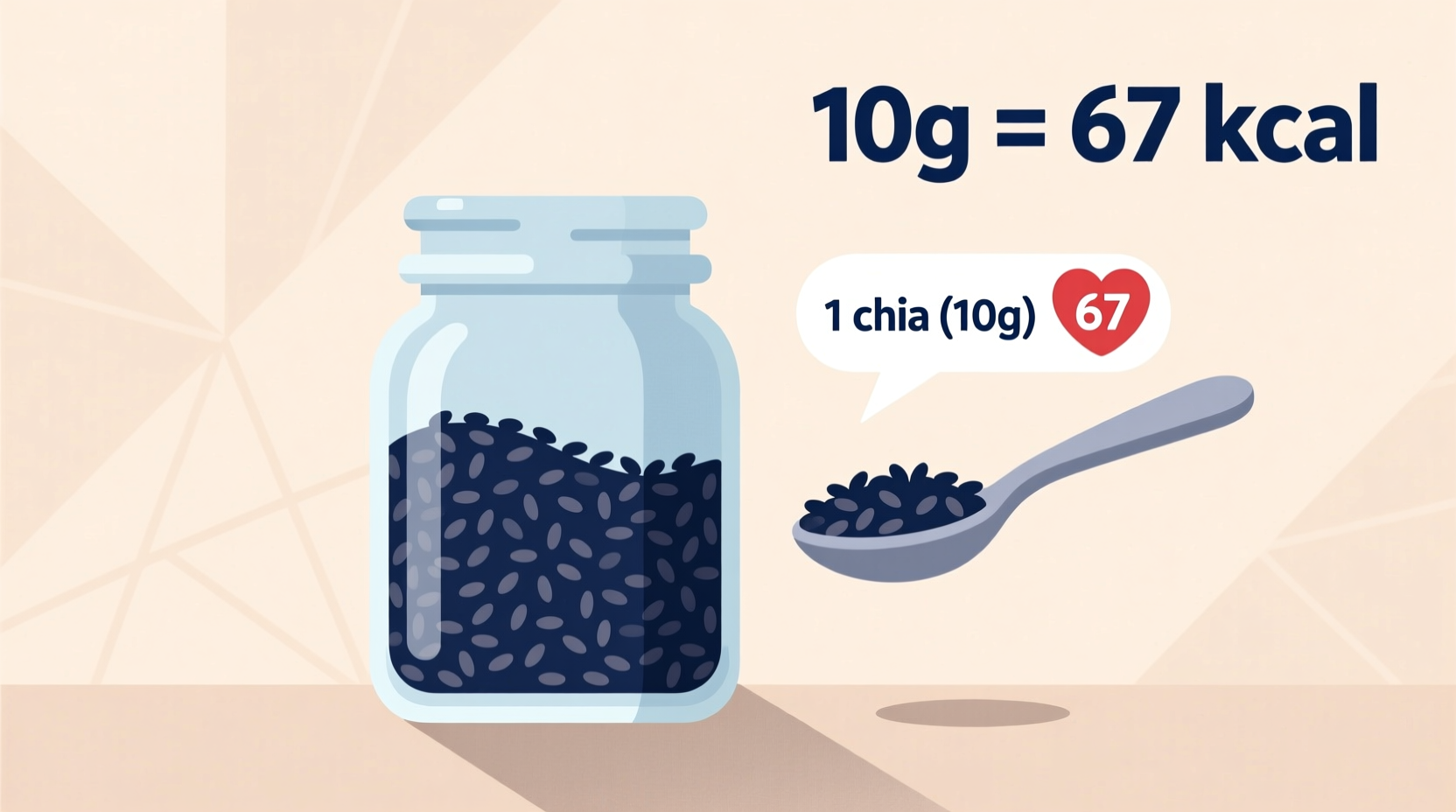Discover exactly how chia seeds fit into your nutritional planning with this evidence-based guide. You'll learn precise calorie counts, understand how this superfood contributes to daily nutrient goals, and get practical tips for incorporating chia seeds into meals while managing your calorie intake effectively.
Exact Calorie Count and Nutritional Breakdown
When tracking your nutrition, precision matters. According to the USDA FoodData Central, the official nutritional profile for one tablespoon (12g) of chia seeds is:
| Nutrient | Amount per 1 Tbsp (12g) | % Daily Value* |
|---|---|---|
| Calories | 58 | 3% |
| Total Fat | 3g | 4% |
| Carbohydrates | 5g | 2% |
| Dietary Fiber | 4g | 14% |
| Protein | 3g | 6% |
*Percent Daily Values are based on a 2,000 calorie diet. Your daily values may be higher or lower depending on your calorie needs.
This nutritional powerhouse delivers more than just calories. Chia seeds provide complete protein (containing all nine essential amino acids), omega-3 fatty acids, calcium, magnesium, and antioxidants. The high fiber content contributes significantly to the feeling of fullness, making chia seeds valuable for weight management despite their calorie density.

How Chia Seeds Fit Into Your Daily Nutrition
Understanding how one tablespoon of chia seeds fits into your overall dietary pattern is crucial for effective meal planning. For most adults following a 2,000-calorie diet:
- 58 calories represents approximately 3% of daily energy needs
- 4g of fiber provides 14% of your recommended daily fiber intake
- 3g of protein contributes to muscle maintenance and repair
Registered dietitians often recommend 1-2 tablespoons of chia seeds daily for optimal benefits without excessive calorie intake. The American Heart Association recognizes chia seeds as part of a heart-healthy diet due to their omega-3 content and fiber profile.
Practical Measurement Guide
Accurate portioning makes all the difference in nutritional tracking. Many people overestimate tablespoon measurements, leading to unintentional calorie surplus. Here's how to measure precisely:
- Use an actual measuring tablespoon, not a regular spoon
- Fill to the top without packing or heaping
- Level off excess with a straight edge for accuracy
- Consider weighing with a kitchen scale (12g = 1 tbsp)
When adding chia seeds to liquids, remember they expand significantly—up to 10 times their original volume—as they absorb liquid. This expansion increases satiety but doesn't change the actual calorie content.
Calorie Comparison With Common Seeds
Understanding how chia seeds compare to other popular seeds helps make informed dietary choices. The table below shows nutritional differences per tablespoon:
| Seed Type | Calories | Fiber (g) | Protein (g) | Key Distinction |
|---|---|---|---|---|
| Chia Seeds | 58 | 4 | 3 | Highest fiber content; forms gel when hydrated |
| Flax Seeds | 37 | 2.8 | 1.3 | Must be ground for optimal nutrient absorption |
| Hemp Seeds | 57 | 0.6 | 3.3 | Higher protein; complete amino acid profile |
| Sesame Seeds | 52 | 1.1 | 1.6 | Rich in calcium; often used toasted for flavor |
This comparison shows chia seeds offer the highest fiber content among common seeds, making them particularly valuable for digestive health and blood sugar management. Their unique ability to absorb liquid creates a feeling of fullness that can help with portion control throughout the day.
Smart Incorporation Strategies
Maximize the nutritional benefits of chia seeds while managing calorie intake with these evidence-based strategies:
- Smoothie booster: Add 1 tbsp to smoothies for thickness and nutrition without significantly altering flavor
- Overnight oats: Replace ¼ cup liquid with chia seeds for creamier texture and added fiber
- Egg substitute: Mix 1 tbsp chia seeds with 3 tbsp water to replace one egg in baking
- Yogurt topping: Sprinkle on Greek yogurt with berries for a balanced snack under 200 calories
- Hydration hack: Stir into water with lemon for a refreshing, fiber-rich beverage
For weight management, registered dietitians recommend consuming chia seeds as part of a balanced meal rather than alone. The combination of fiber, protein, and healthy fats helps stabilize blood sugar and prevent energy crashes.
Nutritional Context and Health Considerations
While the calorie count matters, understanding the broader nutritional context provides more value for your health journey. Research published in the Journal of Food Science and Technology confirms that chia seeds' nutrient density offers several health benefits:
- Supports digestive health through high soluble fiber content
- May help regulate blood sugar levels due to gel-forming properties
- Provides plant-based omega-3s (alpha-linolenic acid) for heart health
- Contributes to bone health with calcium, magnesium, and phosphorus
Individuals with specific health conditions should consider these factors:
- Those on blood thinners should consult their physician due to chia's omega-3 content
- People with swallowing difficulties should consume chia seeds only when hydrated
- Individuals with irritable bowel syndrome may need to moderate intake due to high fiber











 浙公网安备
33010002000092号
浙公网安备
33010002000092号 浙B2-20120091-4
浙B2-20120091-4